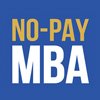Unlocking the MOOC Marketplace, Part 2: Expanding Access
This post is the second in a series on the market for MOOC-based education.
Here’s the paradox of MOOC education: while MOOCs offer the greatest potential for those lacking access to university education, so far the majority of the people who use MOOCs (nearly 80% in one study, 66% in another) already possess university degrees. Some people have taken this statistic - along with the finding that over 90% of students don’t finish the MOOCs they register for - as evidence that MOOCs are a failed experiment in increasing access to higher education.
But question is not, are MOOCs a failure? Rather, the question is, how can MOOCs better serve the market?
In the first post in this series, I described two markets for higher education – one comprised of selective colleges and universities and the students who attend them, and another that can be characterized as non-selective. Understanding the differences between these two markets is key to finding sustainable business models within the MOOC space. As I said in my previous post, the key word to describe the needs of the market for non-selective higher education is ACCESS.
What would it take for MOOCs to reach their potential for expanding access to higher education?
In this post I will talk more about what it would take for MOOCs to meet the needs of the market segment that typically has lower access to higher education, focusing on three things - credentials, work-relevance, and support - and the business opportunities that exist in all these areas.
Credit for MOOCs
Given that MOOCs are in some ways competing with credit-bearing courses, it makes sense that people who don’t yet have degrees would be less likely to experiment with them. A degree holds proven value in the marketplace; non-credit courses, on the other hand, don’t. Therefore, it is understandable that people without university degrees would find little value in MOOCs as compared to for-credit courses at degree-granting institutions. This would explain, at least in part, why MOOC enrollees tend to be people who already have degrees.
But the equation is changing.
Legislators in Florida and California have been pushing universities to grant college credit for MOOCs. If MOOCs can lead to college credit, they may become more attractive to people who desire college credentials but don’t yet have them. Or consider the recent story about a woman who got her bachelor’s degree online, completely free of charge. The degree-granting institution is theUniversity of the People, an online university dedicated to expanding access to higher education. University of the People is the first online-only universities to get accreditation for a tuition-free degree. But other accredited schools like Western Governors University and Southern New Hampshire University already offer college credit based on competency – no classroom time required. These initiatives have the potential to greatly expand access to credentials for those who lack it, especially those students who would otherwise participate in the nonselective market for higher education.
Institutions that end up granting credit for MOOC course work will likely charge some type of fee - albeit less than the current cost of college credit. Universities might charge a fee to transfer credits in, course providers might offer special for-credit courses (paid, of course), and degree/credential-granting institutions might charge for admission, transcript review, or degree processing.
Work-relevant training could be more valuable than a college degree
In my previous post on this topic, I mentioned Harvard strategy professor Clay Christensen’s contention that in ignoring “vocational” education, traditional colleges and universities have left the door open for other education providers to fill this need. Employers complain that university graduates are not well-prepared for the world of work. It stands to reason, then, that some other type of certification for work-relevant training could supplant traditional college degrees as the preferred credential among employers, especially in certain fields. Online course providers like Udacity, Lynda, and Udemy have already adopted learning models that emphasize practical skills. And they are charging for these courses - though not nearly as much as most courses for college credit.
It isn’t hard to imagine that focused, job-specific online training could become more valuable than college degrees in technical fields like web development, or even that demonstrated mastery of commonly used programs and systems (Microsoft suite, Google programs) could be more attractive to an employer than a general degree.
So far only a handful of providers are working on this model, but it is easy to imagine other entrants coming into the market for work-relevant training. The existing providers focus on specific technical skills - computer programming, data analysis, and others. A provider that could train students and demonstrate their capability in areas like teamwork, writing, communications, critical thinking, or problem solving might also be able to charge for a credential.
High-touch support could increase completion rates
Even if the incentives were right for students to choose MOOCs over regular college courses - either because MOOCs could contribute credit toward a degree program, or could add up to a degree in and of themselves, or because some other credentialing system for work-relevant courses had emerged - low completion rates would probably still plague MOOCs.
If the challenges in non-selective brick-and-mortar colleges and universities are any indication, there is good reason to believe that drop-out rates would be high, and completion of an entire degree or other multi-course certification program within a timely fashion would be relatively rare. In fact, given the lack of social pressure and support inherent in online learning, these problems would likely be even more prevalent in MOOCs - even for-credit MOOCs - than in other kinds of classes.
The solution here is to find ways to make MOOCs higher touch. Just as in traditional colleges, extra support can go a long way to increasing completion rates. Some services to make MOOCs higher touch already exist – several MOOC providers and MOOC aggregators have introduced “learning pathways” or course series.
For example, the MOOC aggregator SlideRule is in the process of rolling out learning pathways in addition to the MOOC search and review feature it already provides. Learning pathways support students by taking some of the decision-making out of course selection. Or consider a site like Degreed, that offers learning pathways for both discrete skill sets (e.g. project management) and for degree equivalents in fields like business, computer science, and education. Degreed also helps students track their progress in all modes of online learning.
Another way to support students is through mentoring. Some sites,Thinkful and Udacity, for example, offer mentoring services to go along with their courses.
These support services are all relatively new, and there is still plenty of space for innovation.
The MOOC landscape is changing
With the right incentives and the right support, many more people could benefit from the boom in online education. While it is possible that many or most colleges will begin to feel pressure from emerging educational models, non-selective universities will likely experience the disruption first. It will happen as MOOC providers, online trainers, and third parties find ways to educate people more cheaply and efficiently, with fewer drop-outs, while providing credit, degrees or other recognized credentials. For the moment, there may still be a mismatch between what MOOC providers are offering and what the higher education market wants, but that won’t stay true for long.





